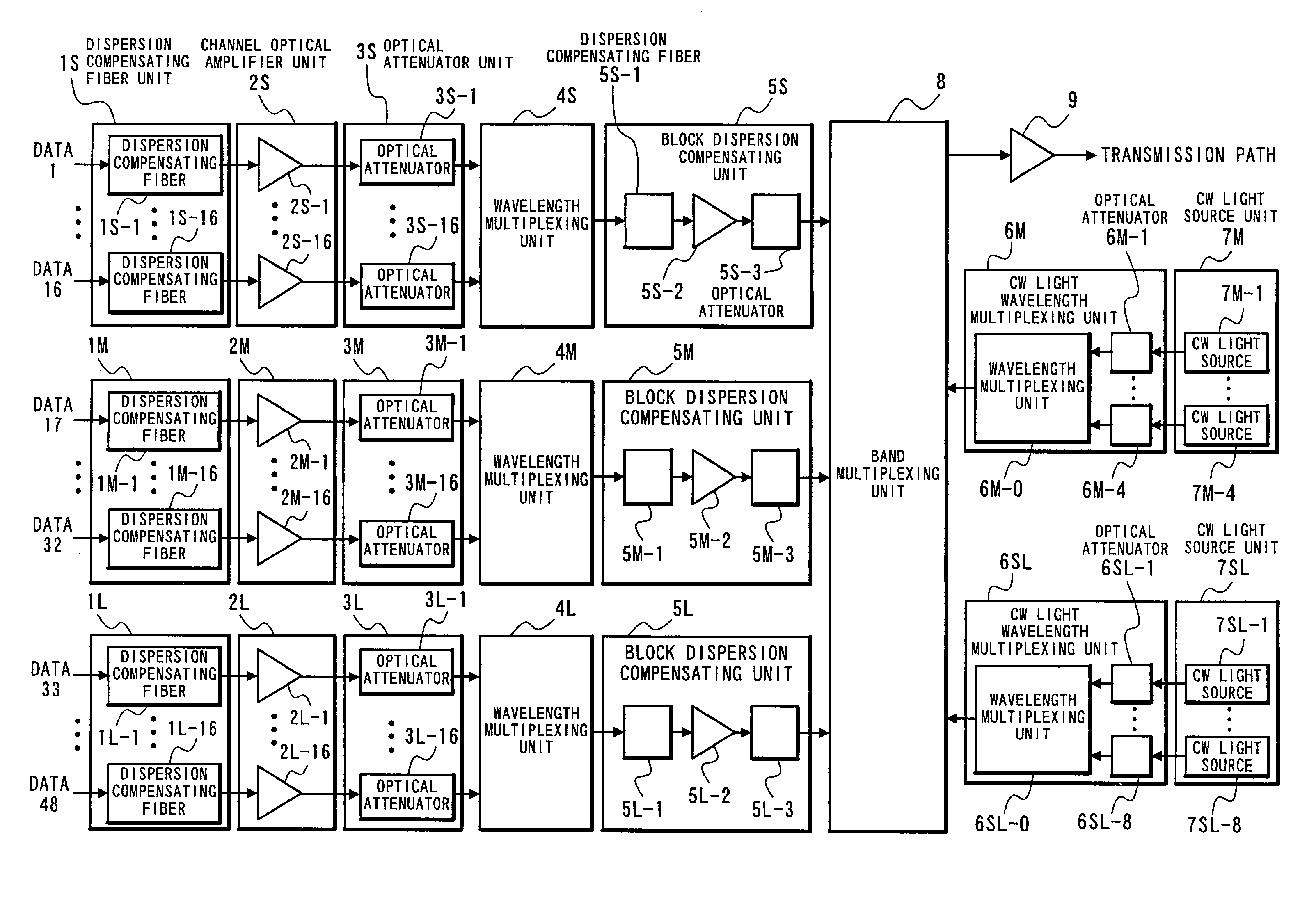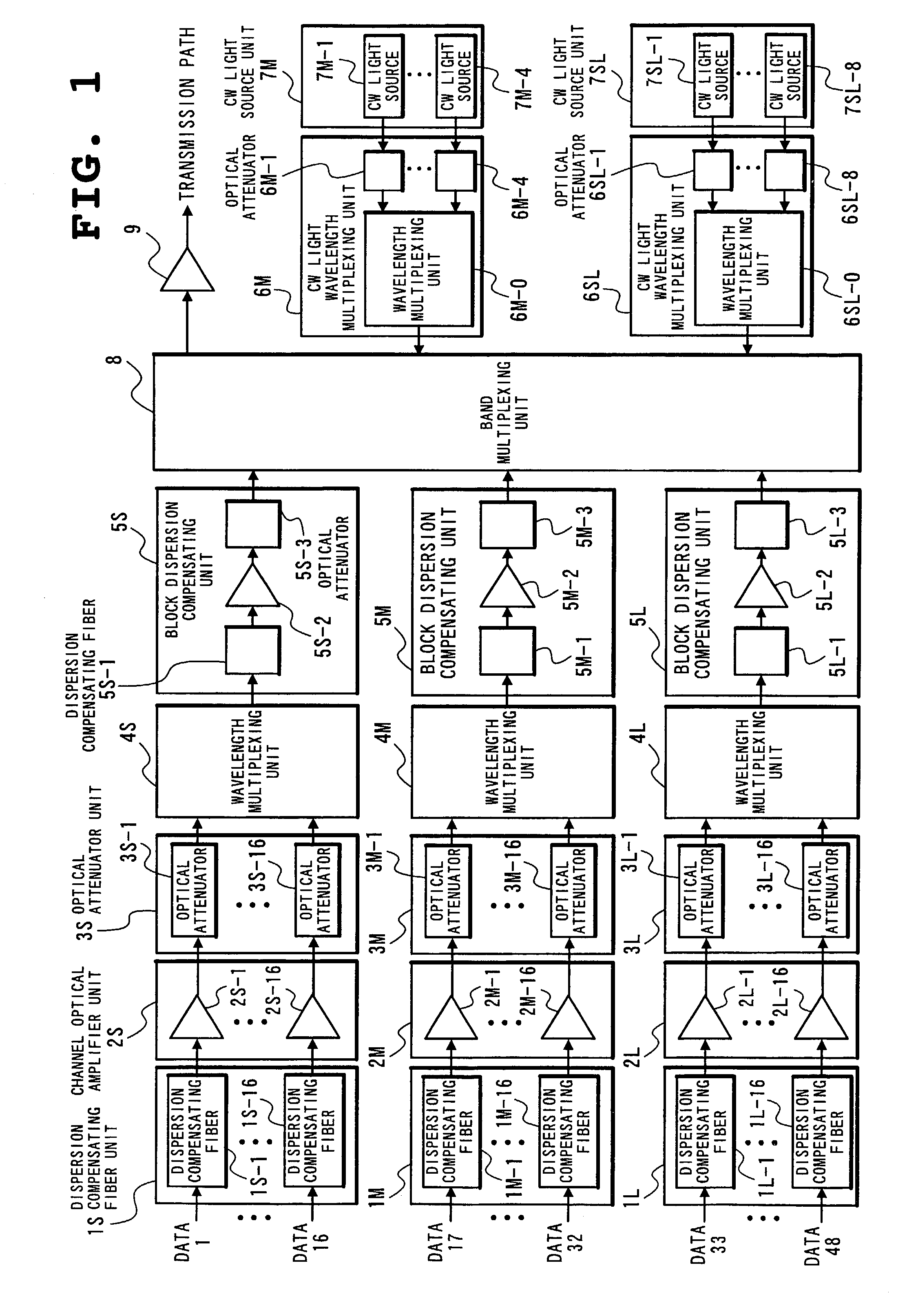Wavelength multiplex transmission device
a transmission device and wavelength technology, applied in the field of optical communication, can solve the problems of inefficient methods, deterioration of signal waveforms, and increase the effect of delay on waveform deterioration, so as to reduce initial costs, reduce the effect of delay, and save spa
- Summary
- Abstract
- Description
- Claims
- Application Information
AI Technical Summary
Benefits of technology
Problems solved by technology
Method used
Image
Examples
Embodiment Construction
[0068]The preferred embodiment of the present invention will be discussed hereinafter in detail with reference to the accompanying drawings. In the following description, numerous specific details are set forth in order to provide a thorough understanding of the present invention. It will be obvious, however, to those skilled in the art that the present invention may be practiced without these specific details. In other instance, well-known structures are not shown in detail in order to unnecessary obscure the present invention.
[0069]FIG. 1 is a block diagram showing one embodiment of a wavelength multiplex transmission device according to the present invention. In the following, description will be made with reference to the drawing.
[0070]In the present embodiment, signal bands are divided into three bands, an S band, an M band and an L band. Since basic structure of each band is the same, the following description will be made with respect mainly to the S band.
[0071]The wavelength...
PUM
 Login to View More
Login to View More Abstract
Description
Claims
Application Information
 Login to View More
Login to View More - R&D
- Intellectual Property
- Life Sciences
- Materials
- Tech Scout
- Unparalleled Data Quality
- Higher Quality Content
- 60% Fewer Hallucinations
Browse by: Latest US Patents, China's latest patents, Technical Efficacy Thesaurus, Application Domain, Technology Topic, Popular Technical Reports.
© 2025 PatSnap. All rights reserved.Legal|Privacy policy|Modern Slavery Act Transparency Statement|Sitemap|About US| Contact US: help@patsnap.com



